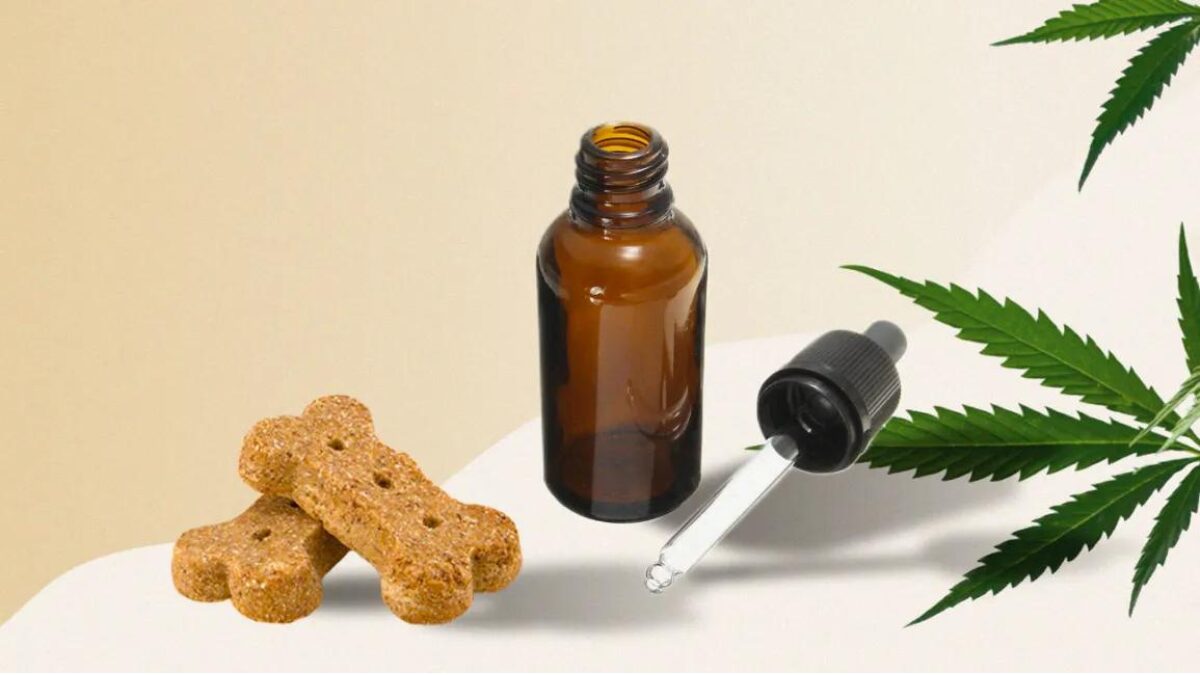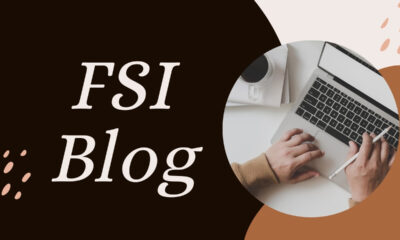Health
The 10 Warning Signs of Mold Toxicity: What Every Homeowner Needs to Know

Mold it’s a word that sends shivers down the spine of many homeowners, health enthusiasts, and environmentalists alike. Mold toxicity, also known as mold illness or mold-related illness, refers to the adverse health effects caused by exposure to toxic mold spores. While mold can grow nearly anywhere that moisture exists, the hidden danger lies in how it can silently impact our health if left unchecked.
Understanding mold toxicity is crucial for safeguarding both your home and your well-being. This post will dive deep into what mold toxicity is, its common causes, the warning signs to watch out for, and how you can detect, prevent, and handle mold effectively.
Common Causes of Mold
Before we delve into the warning signs of mold toxicity, let’s examine the common causes of mold growth in homes. Knowing where mold comes from can help you take preventive measures to ensure your living environment remains safe and healthy.
Moisture and Humidity
Mold thrives in damp, humid conditions. Common areas include basements, bathrooms, and kitchens where moisture levels are often high. Leaks, floods, and condensation are frequent culprits.
Poor Ventilation
Insufficient ventilation traps moisture inside, creating an ideal breeding ground for mold. Ensure proper airflow in areas prone to dampness.
Leaks and Water Damage
Water damage from leaks in roofs, windows, or plumbing can lead to hidden mold growth behind walls and under floors.
Condensation
Condensation on surfaces like windows and pipes can accumulate and foster mold growth, especially in colder climates.
Flooding
Homes that have experienced flooding are at significant risk for mold. Standing water and soaked materials can harbor mold spores rapidly.
Damp Fabrics and Carpeting
Fabrics, rugs, and carpets that remain damp for prolonged periods can become moldy. Regular cleaning and drying are essential to prevent this.
Organic Materials
Mold feeds on organic materials such as wood, paper, and textile fibers. Areas with these materials and high moisture levels are particularly vulnerable.
10 Warning Signs of Mold Toxicity
Mold toxicity can manifest in various ways, often mimicking other illnesses, which makes it challenging to diagnose. Here are ten critical warning signs to look out for:
Respiratory Issues
Persistent coughing, sneezing, and nasal congestion are common symptoms. Mold spores can irritate the respiratory tract, leading to chronic respiratory problems.
Asthma Flares
Individuals with asthma may experience more frequent and severe attacks. Mold spores are known to trigger asthma symptoms and exacerbate the condition.
Chronic Sinus Infections
Recurring sinus infections that do not respond well to standard treatments might indicate mold exposure. Mold spores can inflame the sinus cavities.
Skin Irritation
Unexplained rashes, hives, and itching are possible signs of mold toxicity. Direct contact with mold can cause skin reactions.
Eye Irritation
Red, watery, and itchy eyes can result from mold exposure. Mold spores can irritate the mucous membranes in the eyes.
Fatigue and Weakness
Chronic fatigue and weakness, even after adequate rest, can be a warning sign. Mold toxicity can affect overall energy levels and cause persistent lethargy.
Headaches and Migraines
Frequent headaches and migraines can be triggered by mold exposure. The presence of mold in your environment can lead to neurological symptoms.
Cognitive Issues
Memory problems, difficulty concentrating, and mental fog are potential signs of mold toxicity. Mold exposure can impact brain function over time.
Nausea and Vomiting
Digestive issues like nausea, vomiting, and diarrhea can occur. Mold spores can affect the gastrointestinal system, leading to discomfort and illness.
Muscle and Joint Pain
Unexplained muscle aches and joint pain can be linked to mold exposure. Mold toxicity can cause inflammation throughout the body, resulting in pain and stiffness.
Health Implications of Mold Toxicity
Understanding the health implications of mold toxicity underscores the importance of early detection and intervention. Mold exposure can have severe and long-term effects on your health.
Allergic Reactions
Mold spores are allergens that can trigger allergic reactions in sensitive individuals. Symptoms include sneezing, runny nose, and itchy eyes. Prolonged exposure can worsen these reactions and lead to chronic allergies.
Respiratory Disorders
Mold exposure is particularly harmful to individuals with pre-existing respiratory conditions such as asthma and chronic obstructive pulmonary disease (COPD). It can exacerbate symptoms and lead to bronchitis or pneumonia.
Neurological Effects
Mold toxicity can affect the nervous system, leading to cognitive issues, mood swings, and in severe cases, neurological disorders. Brain fog, memory loss, and confusion are common symptoms.
Immune System Suppression
Prolonged mold exposure can weaken the immune system, making it more challenging for your body to fight off infections. This can lead to increased susceptibility to illnesses.
Toxic Mold Syndrome
Some molds, like Stachybotrys chartarum (black mold), produce mycotoxins, which are toxic chemicals. Exposure to these mycotoxins can lead to toxic mold syndrome, causing severe health issues, including organ damage and neurological problems.
Detection and Prevention
Early detection and prevention of mold are crucial for maintaining a healthy home environment. Here are some practical tips to help you identify and prevent mold growth:
Conduct Regular Inspections
Regularly inspect your home, paying close attention to areas prone to moisture, such as basements, bathrooms, and attics. Look for visible mold growth, water stains, and musty odors.
Control Humidity Levels
Use dehumidifiers and air conditioners to maintain indoor humidity levels between 30% and 50%. Proper ventilation in bathrooms and kitchens is essential to reduce moisture buildup.
Fix Leaks Promptly
Repair any leaks in roofs, windows, and plumbing immediately. Water damage can quickly lead to mold growth, so addressing issues promptly is vital.
Ensure Proper Ventilation
Ensure your home has adequate ventilation, especially in areas prone to moisture. Use exhaust fans in bathrooms and kitchens to reduce humidity levels.
Clean and Dry Damp Areas
Clean and dry any damp or wet areas within 24-48 hours to prevent mold from growing. Pay attention to damp fabrics, rugs, and carpets.
Use Mold-Resistant Products
When renovating or building, consider using mold-resistant products, such as mold-resistant drywall and paint. These materials can help prevent mold growth in susceptible areas.
Monitor Indoor Air Quality
Invest in indoor air quality monitors to detect changes in humidity and mold spores. Regular monitoring can alert you to potential mold issues before they become severe.
Dealing with Mold
If you suspect mold in your home, taking prompt action is essential to mitigate the problem. Here’s how you can effectively deal with mold:
Professional Mold Inspection
Hire a certified mold inspector to conduct a thorough inspection of your home. Professionals have the expertise and equipment to identify hidden mold growth and assess the extent of the contamination.
Mold Removal
For extensive mold growth or toxic black mold, it’s best to hire a professional mold remediation company. They have the necessary tools and protective gear to safely remove mold and prevent it from spreading.
DIY Mold Removal
For smaller areas of mold growth, you can attempt DIY mold removal using commercial mold cleaners or a mixture of water and detergent. Ensure you wear protective gear, such as gloves and a mask, to avoid direct contact with mold spores.
Dispose of Contaminated Materials
Discard any materials that cannot be thoroughly cleaned, such as moldy carpets, drywall, and insulation. Proper disposal prevents mold from spreading to other areas of your home.
Prevent Future Mold Growth
After removing mold, take preventive measures to ensure it doesn’t return. Follow the prevention tips mentioned earlier, such as controlling humidity levels, fixing leaks, and maintaining proper ventilation.
Real-Life Stories of Mold Toxicity
Hearing real-life stories of individuals who have faced mold toxicity can provide valuable insights and motivation to take action. Here are a few relatable stories:
Sarah’s Battle with Mold
Sarah, a homeowner from Florida, experienced chronic sinus infections and severe fatigue for years. After multiple visits to doctors, she discovered hidden mold behind her bathroom walls. Professional mold remediation transformed her health, and she now advocates for regular mold inspections.
Mark’s Asthma Worsens
Mark, an asthma sufferer, noticed his symptoms worsening despite using prescribed inhalers. A mold inspection revealed extensive mold growth in his basement. After addressing the mold issue, Mark’s asthma attacks significantly reduced, and he could breathe easier.
Emily’s Cognitive Struggles
Emily, a health enthusiast, began experiencing memory problems and brain fog. She discovered mold contamination in her home after noticing water damage in her attic. Removing the mold and improving ventilation restored her cognitive function, and she now shares her story to raise awareness.
Conclusion
Mold toxicity is a serious health concern that every homeowner, health enthusiast, and environmentalist should be aware of. By understanding the common causes of mold, recognizing the warning signs, and taking preventive measures, you can protect your home and your health.
Early detection and prompt action are crucial to mitigating the risks associated with mold toxicity. If you suspect mold in your home, don’t hesitate to seek professional help and address the issue promptly.
To learn more about mold detection, prevention, and professional mold removal, download our comprehensive guide now. Protect your home, safeguard your well-being, and breathe easy knowing you’re taking the necessary steps to combat mold toxicity.
Frequently Asked Questions
What are the common symptoms of mold toxicity?
Mold toxicity can manifest through a variety of symptoms, including chronic sinus infections, headaches, fatigue, respiratory issues, skin rashes, and neurological problems such as memory loss and brain fog. Individuals with asthma or allergies may experience heightened symptoms.
How can I test my home for mold?
To test your home for mold, you can start with a visual inspection and look for signs of water damage, discoloration, and musty odors. Additionally, you can use home testing kits available online or hire a certified mold inspector for a professional assessment.
Is it safe to remove mold myself, or should I hire a professional?
For small areas of mold growth, you can attempt DIY mold removal using commercial mold cleaners or a mixture of water and detergent. Always wear protective gear. However, for extensive mold growth or toxic black mold, it’s safer to hire a professional mold remediation company to ensure thorough and safe removal.
How can I prevent mold from growing in my home?
Preventing mold growth involves controlling humidity levels, fixing leaks promptly, ensuring proper ventilation, cleaning and drying damp areas quickly, and using mold-resistant products during construction or renovation. Regular inspections and monitoring indoor air quality are also beneficial.
What should I do if I experience health issues due to mold exposure?
If you suspect mold toxicity is affecting your health, consult a healthcare professional experienced in environmental medicine. Simultaneously, take steps to eliminate mold from your home. This may involve professional mold inspection and remediation. Addressing both your health and the environmental factors is crucial for recovery.
Health
Improving Digestive Health in Dogs Using CBD Oil

Digestive health is extremely crucial for the overall well-being of dogs. When a dog’s digestive system functions optimally, it ensures efficient nutrient absorption, supports immune health and contributes to a happier, more active pet.
Cannabidiol (CBD) oil has come out as a promising natural remedy for multiple health issues in dogs, including digestive problems. This article delves into how cbd oil for dogs can improve digestive health in the canines, offering detailed insights into its benefits and applications.
Understanding the Product and Its Benefits
Cannabidiol oil is extracted from the hemp plant and contains cannabidiol, an element known for its therapeutic properties. Unlike tetrahydrocannabinol (THC), CBD does not produce psychoactive effects. Instead, the element interacts with the endocannabinoid system (ECS) present in all mammals, including dogs. The ECS is vital in regulating multiple bodily functions, such as pain sensation, mood, appetite, and digestion. By influencing the ECS, this product can help maintain homeostasis and promote overall health.
1. Alleviating Gastrointestinal Inflammation
One of the fundamental benefits of cbd oil for dogs is its anti-inflammatory properties. Gastrointestinal inflammation can cause various digestive issues, including irritable bowel syndrome (IBS) and inflammatory bowel disease (IBD). This product helps reduce inflammation in the gut by interacting with the ECS receptors, thereby alleviating symptoms such as pain, diarrhea, and bloating. Regular use of this medicinal oil can lead to significant improvements in a dog’s digestive health by minimizing chronic inflammation.
2. Enhancing Appetite and Reducing Nausea
Loss of appetite and nausea are quite common symptoms in dogs suffering from digestive issues. CBD oil has been shown to stimulate appetite and reduce nausea by interacting with serotonin receptors in the brain. This can be particularly beneficial for animals undergoing treatments such as chemotherapy, which often lead to reduced appetite and nausea.
3. Regulating Bowel Movements
CBD oil can help regulate bowel movements in dogs, addressing issues such as constipation and diarrhea. The ECS plays a crucial role in maintaining gut motility, and cannabidiol oil’s interaction with ECS receptors helps normalize bowel movements. This regulation ensures that the animals do not suffer from discomfort associated with irregular bowel movements, promoting a healthier digestive system.
4. Reducing Anxiety and Stress
Stress and anxiety can significantly impact a canine’s digestive health, often leading to symptoms like diarrhea, vomiting, and loss of appetite. Cannabidiol oil is well-known for its calming effects, helping to lower anxiety and stress in dogs. By promoting relaxation, this oil can prevent stress-induced digestive issues, ensuring that canines remain calm and their digestive systems function smoothly.
5. Supporting Gut Microbiome Balance
A balanced gut microbiome is very essential for optimal digestive health in canines. An imbalance in gut bacteria leads to digestive problems such as gas, bloating, and diarrhea. CBD oil supports a healthy gut microbiome by promoting the growth of healthy bacteria and decreasing harmful bacteria. Such a balance is crucial for proper digestion and nutrient absorption.
6. Providing Pain Relief from Gastrointestinal Disorders
Digestive disorders often cause significant pain and discomfort in canines. Conditions like gastritis, pancreatitis, and colitis can lead to chronic pain. CBD oil offers a natural and effective path to manage this pain. Its analgesic properties help alleviate pain by interacting with ECS receptors and reducing inflammation. This pain relief allows dogs to eat and digest food more comfortably, improving their quality of life.
CBD oil offers multiple benefits for improving digestive health in dogs. By alleviating gastrointestinal inflammation, enhancing appetite, regulating bowel movements, reducing anxiety, supporting gut microbiome balance, and providing pain relief, this product can significantly enhance a dog’s digestive health. Integrating such a medicinal oil into a dog’s health regimen, under veterinary guidance, can lead to a happier, healthier pet with a well-functioning digestive system.
Blog
Grenblis: A Comprehensive Guide

Introduction
Ever heard of Grenblis? It’s not just a quirky name; it’s a fascinating subject that deserves attention. Grenblis is a unique creature, captivating scientists and nature enthusiasts alike. But what exactly is it, and why is it so important? Let’s dive into the world of Grenblis and uncover its mysteries.
History of Grenblis
Origins and Discovery
The story of Grenblis began centuries ago when early explorers first stumbled upon this enigmatic creature. Its origins are shrouded in mystery, with ancient texts and folklore hinting at its existence long before modern science caught up. Grenblis was officially recognized and named in the early 19th century by pioneering naturalists.
Evolution Over Time
Grenblis has not remained static through the ages. Its evolutionary journey is marked by significant adaptations that have allowed it to thrive in diverse environments. Understanding its evolutionary history helps scientists predict its future and the challenges it might face.
Biological Characteristics
Physical Description
Grenblis stands out with its striking appearance. Typically, it features vibrant colors and unique patterns that make it easily recognizable. Its physical traits vary across different regions, with some populations exhibiting distinct variations.
Habitat and Distribution
Grenblis can be found in various habitats, from dense forests to open plains. It has a wide distribution, spanning several continents, and each population has adapted to its specific environment. Understanding its habitat preferences is crucial for conservation efforts.
Diet and Feeding Habits
A creature’s diet tells a lot about its role in the ecosystem. Grenblis primarily feeds on a mix of plants and small insects. Its feeding habits influence the vegetation and the overall health of its habitat, making it a key player in its ecosystem.
Behavior and Social Structure
Mating and Reproduction
The mating rituals of Grenblis are a spectacle to behold. With elaborate displays and intricate dances, they attract mates in a competitive environment. Once paired, they exhibit fascinating reproductive behaviors that ensure the survival of their offspring.
Social Hierarchy
In the world of Grenblis, social structure plays a significant role. They live in groups with a defined hierarchy, where each member has a specific role. Understanding their social interactions helps in studying their behavior and overall well-being.
Communication Methods
Communication is vital for Grenblis, and they use a mix of vocalizations, body language, and even chemical signals to interact. This complex communication system allows them to coordinate activities, warn of dangers, and strengthen social bonds.
Ecological Impact
Role in the Ecosystem
Grenblis is more than just a pretty face; it plays a crucial role in its ecosystem. As both predator and prey, it helps maintain the balance of species in its habitat. Its presence influences the structure and composition of the ecological community.
Predators and Threats
Despite its importance, Grenblis faces numerous threats. Natural predators, habitat destruction, and human activities pose significant risks. Understanding these threats is essential for developing effective conservation strategies.
Conservation Status
The conservation status of Grenblis varies across regions. While some populations are thriving, others are on the brink of extinction. Efforts are underway to assess their numbers accurately and implement measures to protect them.
Grenblis in Popular Culture
Representations in Media
Grenblis has captured the imagination of artists and storytellers. It appears in various media, from books and movies to video games. These representations often shape public perception and can influence conservation efforts.
Myths and Legends
Myths and legends about Grenblis abound, adding to its allure. These stories, passed down through generations, reflect the cultural significance of this creature and highlight its impact on human societies.
Research and Studies
Key Scientific Discoveries
Scientific research has unveiled many secrets of Grenblis. Key discoveries include insights into its behavior, genetics, and ecological role. These findings are crucial for informing conservation strategies and understanding its place in the natural world.
Current Research Trends
Current research focuses on several areas, including the effects of climate change on Grenblis populations, genetic diversity, and the impact of human activities. Ongoing studies aim to fill knowledge gaps and provide a basis for future conservation efforts.
Conservation Efforts
Protection Initiatives
Various initiatives are in place to protect Grenblis. These include habitat preservation, legal protections, and breeding programs. Collaboration between governments, NGOs, and local communities is essential for these efforts to succeed.
How You Can Help
You don’t need to be a scientist to help conserve Grenblis. Simple actions like supporting conservation organizations, spreading awareness, and advocating for sustainable practices can make a big difference. Every little bit helps in ensuring the survival of this remarkable creature.
Economic and Medicinal Value
Economic Importance
Grenblis holds economic value in several sectors. Ecotourism centered around Grenblis sightings can boost local economies. Additionally, they play a role in maintaining healthy ecosystems, which are vital for agriculture and other human activities.
Medicinal Uses
Some traditional medicines incorporate Grenblis, believing it has healing properties. While scientific evidence is limited, these practices highlight the cultural and potential medicinal significance of Grenblis.
Challenges in Grenblis Conservation
Human Impact
Human activities like deforestation, pollution, and urbanization are major threats to Grenblis. These impacts reduce their habitat and disrupt their natural behaviors, making conservation efforts increasingly challenging.
Climate Change Effects
Climate change poses a significant threat to Grenblis, altering their habitats and food sources. Rising temperatures, changing precipitation patterns, and extreme weather events can all negatively impact Grenblis populations.
Future of Grenblis
Predictions and Speculations
What does the future hold for Grenblis? Scientists predict that without urgent conservation actions, many populations could decline drastically. However, with concerted efforts, it’s possible to secure a stable future for Grenblis.
Importance of Sustainable Practices
Sustainable practices are key to preserving Grenblis. This includes promoting biodiversity, reducing carbon footprints, and implementing policies that protect natural habitats. A sustainable approach ensures that Grenblis and other species can thrive for generations to come.
How to Observe Grenblis in the Wild
Best Locations
If you’re eager to see Grenblis in their natural habitat, certain locations offer the best chances. National parks and wildlife reserves with protected areas are ideal spots. Always check for the best seasons and times to visit.
Ethical Wildlife Watching
Observing Grenblis in the wild should be done ethically. This means keeping a safe distance, not disturbing their natural behaviors, and following local guidelines. Ethical wildlife watching ensures that Grenblis remain undisturbed and their habitats intact.
Grenblis and Technology
Technological Advances in Study
Technology has revolutionized the study of Grenblis. Tools like GPS tracking, drones, and genetic analysis provide deeper insights into their behavior, movements, and genetics. These advancements aid in effective conservation planning.
How Technology Helps Conservation
Technology also plays a crucial role in conservation efforts. Remote sensing helps monitor habitats, while online platforms facilitate global collaboration and data sharing. Technological innovations are essential for the long-term conservation of Grenblis.
Personal Stories and Experiences
Anecdotes from Researchers
Researchers who study Grenblis often have fascinating stories to tell. These personal accounts provide a unique perspective on the challenges and rewards of studying this creature. They also highlight the passion and dedication required for conservation work.
Wildlife Enthusiasts’ Encounters
Wildlife enthusiasts who have encountered Grenblis in the wild share unforgettable experiences. These stories can inspire others to appreciate and protect Grenblis, fostering a deeper connection between humans and nature.
Conclusion
Grenblis is a remarkable creature that plays a vital role in its ecosystem. From its intriguing behavior to its ecological impact, there’s much to admire and protect. By understanding Grenblis and supporting conservation efforts, we can ensure that this unique species continues to thrive.
What makes Grenblis unique?
Answer:
Grenblis stands out due to its vibrant appearance, complex social structure, and significant ecological role. Its unique characteristics make it a subject of fascination and importance.
How can I contribute to Grenblis conservation?
Answer:
You can help by supporting conservation organizations, spreading awareness, and advocating for policies that protect natural habitats. Simple actions can make a big difference.
Where can I learn more about Grenblis?
Answer:
Numerous resources are available, including scientific journals, documentaries, and books dedicated to Grenblis. Online platforms and wildlife organizations also offer valuable information.
Are there any famous Grenblis?
Answer:
While Grenblis may not be as famous as some other species, certain individuals have gained recognition through media and research studies, highlighting their unique traits and stories.
How does Grenblis affect the environment?
Answer:
Grenblis plays a crucial role in maintaining ecological balance. As both predator and prey, it influences the populations of other species and helps sustain healthy ecosystems.
Blog
Understanding Soymamicoco: A Comprehensive Guide

Introduction
Ever heard of soymamicoco? If not, you’re in for a treat! Soymamicoco is a fascinating term that’s making waves in various circles. This article will dive deep into what soymamicoco is, its origins, cultural significance, modern applications, and much more. So, grab a cup of your favorite beverage and let’s explore the world of soymamicoco together.
The Origins of Soymamicoco
Historical Background
The history of soymamicoco is rich and varied, spanning several centuries. This term has roots in ancient traditions, often linked to regions where soy and coconut are staple foods. Understanding its historical context helps us appreciate its significance in today’s world.
Etymology of the Term
The term “soymamicoco” is a blend of words that hint at its composition. “Soy” comes from the soy plant, “mami” is a colloquial term of endearment, and “coco” stands for coconut. This fusion perfectly encapsulates the essence of soymamicoco.
Cultural Significance
Role in Various Cultures
Soymamicoco has a special place in various cultures, especially in Asian and tropical regions. It’s not just a food item but a symbol of tradition and community bonding.
Traditional Uses
Traditionally, soymamicoco has been used in festive dishes and ceremonies. It’s often seen in recipes that have been passed down through generations, showcasing its enduring appeal.
Soymamicoco in Modern Times
Contemporary Applications
In modern times, soymamicoco has found its way into a variety of applications. From culinary uses to beauty products, its versatility is truly remarkable.
Popularity in Different Regions
Its popularity varies across regions, with some countries embracing it more than others. In recent years, the Western world has started to recognize and appreciate its unique benefits.
Nutritional Value of Soymamicoco
Key Nutrients
Soymamicoco is packed with essential nutrients. It’s rich in proteins from soy and healthy fats from coconut, making it a balanced addition to any diet.
Health Benefits
The health benefits of soymamicoco are numerous. It supports heart health, provides energy, and aids in digestion. Regular consumption can contribute to overall well-being.
How to Incorporate Soymamicoco into Your Diet
Simple Recipes
Incorporating soymamicoco into your diet is easy and delicious. You can start with simple recipes like smoothies, stir-fries, and desserts that highlight its unique flavor.
Cooking Tips
For the best results, use fresh ingredients and experiment with different cooking methods. Whether you’re roasting, baking, or blending, soymamicoco adapts well to various techniques.
Soymamicoco and Sustainability
Environmental Impact
Soymamicoco production tends to be environmentally friendly. Both soy and coconut farming have lower carbon footprints compared to other crops, making soymamicoco a sustainable choice.
Ethical Considerations
Choosing soymamicoco supports ethical farming practices. Many producers focus on fair trade and organic farming, ensuring that your consumption benefits both you and the planet.
Economic Impact
Market Trends
The market for soymamicoco is growing rapidly. As more people discover its benefits, demand is rising, leading to interesting trends in global trade.
Global Trade
Soymamicoco is traded globally, with significant markets in Asia, Europe, and the Americas. Its trade patterns reflect its rising popularity and economic importance.
Comparing Soymamicoco with Other Superfoods
Nutritional Comparison
When compared to other superfoods, soymamicoco holds its own. Its combination of nutrients offers a well-rounded profile that can compete with more well-known superfoods like quinoa or chia seeds.
Cost-Effectiveness
Soymamicoco is not only nutritious but also cost-effective. Its availability and affordability make it an excellent option for those looking to enhance their diet without breaking the bank.
Common Misconceptions About Soymamicoco
Myths and Facts
There are several myths surrounding soymamicoco. Some people believe it’s just a fad, but its long history and proven benefits tell a different story.
Addressing Misunderstandings
By addressing these misconceptions, we can better appreciate soymamicoco’s true value. It’s not just a trendy ingredient but a staple with deep cultural and nutritional significance.
Health Concerns and Precautions
Potential Allergies
As with any food, there are potential allergies to consider. While rare, some individuals may be allergic to soy or coconut. It’s important to be aware and take precautions.
Safe Consumption Practices
To safely enjoy soymamicoco, start with small amounts and observe any reactions. Consulting with a healthcare provider is always a good idea if you have concerns.
Scientific Research on Soymamicoco
Recent Studies
Recent studies have highlighted the numerous benefits of soymamicoco. Research is ongoing, and scientists are continually discovering new aspects of its nutritional profile.
Future Research Directions
Future research aims to explore more about soymamicoco’s health benefits and potential applications. The scientific community is excited about what’s yet to be discovered.
DIY Soymamicoco Projects
Homemade Products
You can create various homemade products using soymamicoco. From skincare items to homemade snacks, the possibilities are endless.
Creative Uses
Get creative with soymamicoco! Use it in art projects, as a natural dye, or even as part of your gardening routine. Its versatility extends beyond the kitchen.
Testimonials and Success Stories
Personal Experiences
Many people have shared their positive experiences with soymamicoco. From improved health to culinary delights, these testimonials highlight its impact on daily life.
Influencer Endorsements
Influencers and celebrities are also catching on to the soymamicoco trend. Their endorsements bring more visibility and credibility to this amazing product.
Conclusion
Soymamicoco is more than just a food; it’s a cultural phenomenon with a rich history and promising future. Its nutritional benefits, versatility, and sustainability make it a worthy addition to any diet. Whether you’re a health enthusiast or just curious, giving soymamicoco a try could be a delightful and beneficial experience.
What is soymamicoco?
Answer:
Soymamicoco is a blend of soy and coconut, known for its nutritional benefits and versatility in culinary and other applications.
How can I use soymamicoco in cooking?
Answer:
You can use soymamicoco in various recipes such as smoothies, stir-fries, and desserts. It adds a unique flavor and nutritional boost to any dish.
Is soymamicoco environmentally friendly?
Answer:
Yes, soymamicoco is considered environmentally friendly due to the sustainable farming practices of soy and coconut.
Where can I buy soymamicoco?
Answer:
Soymamicoco can be purchased at health food stores, online retailers, and some supermarkets. Look for organic and fair-trade options for the best quality.
Are there any health risks associated with soymamicoco?
Answer:
While generally safe, some individuals may be allergic to soy or coconut. It’s important to start with small amounts and consult with a healthcare provider if needed.
-

 Marketing2 months ago
Marketing2 months agoUnlocking the Potential of FSI Blogs: A Comprehensive Guide
-

 Blog5 months ago
Blog5 months agoThe Seating Arrangement Surprise: A Story About Sitting Next to a Scary Yakuza
-

 Blog5 months ago
Blog5 months agoUnderstanding Chancerne: Unveiling the Science Behind this Enigmatic Phenomenon
-

 Tech4 months ago
Tech4 months agoUnveiling the Wonders of divijos: Revolutionizing Our World
-

 Business5 months ago
Business5 months agoUnderstanding Trading: Unveiling the Dynamics of Financial Markets
-

 Health3 months ago
Health3 months agoDiscover the World of Ztec100.com: Your Ultimate Guide to Tech, Health, and Insurance
-

 Blog5 months ago
Blog5 months agoMastering Pal Trading in Pal World: A Comprehensive Guide
-

 Blog5 months ago
Blog5 months agoUnlocking the Potential of Gidler: A Comprehensive Guide to Understanding and Harnessing its Power










